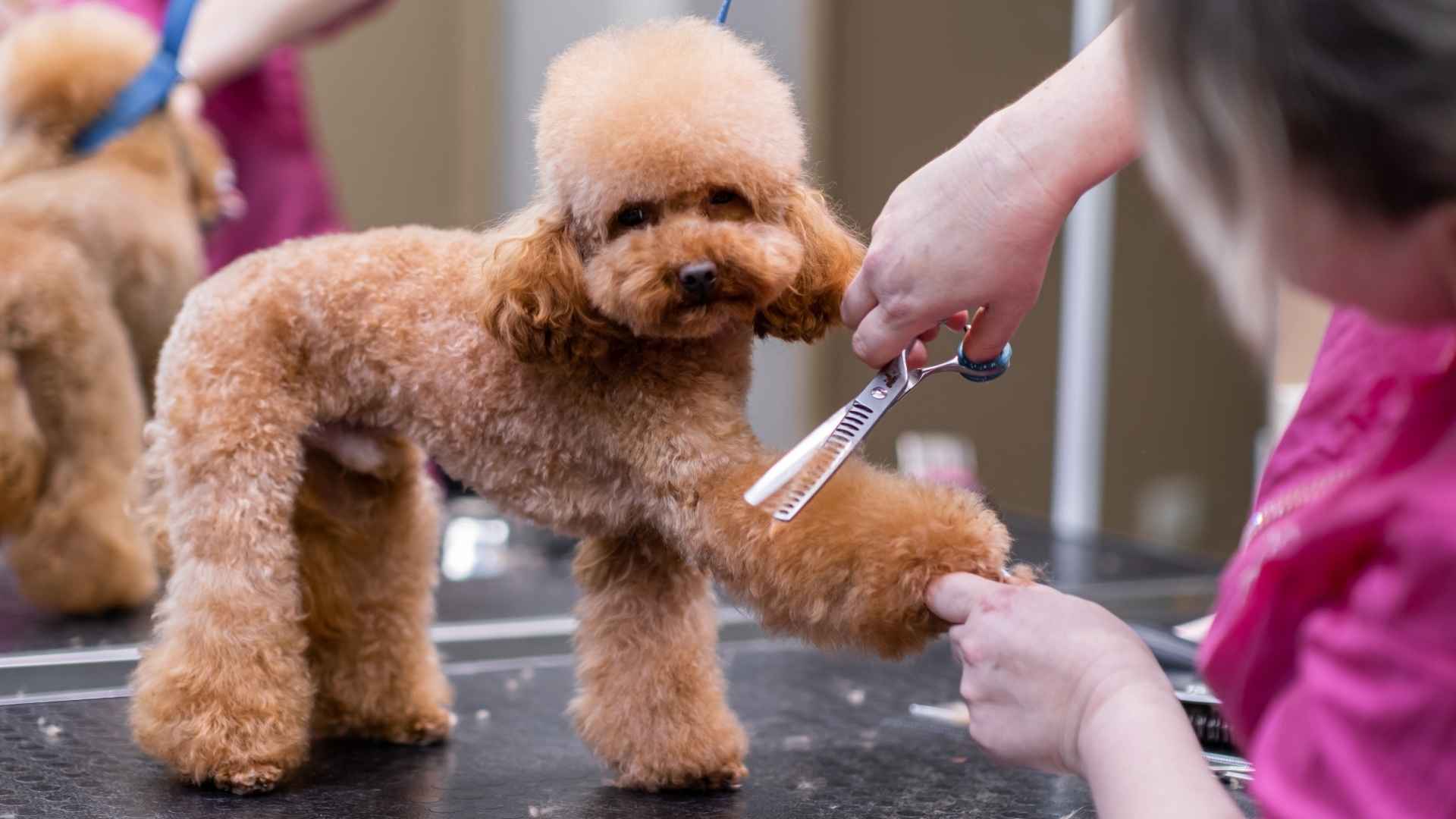When it comes to owning a dog, there’s nothing like having a furry companion that requires a little extra TLC, especially when it comes to grooming. Grooming-intensive dog breeds can be a joy to have, but they do require time, patience, and regular maintenance to keep their coats looking their best. Whether it’s frequent brushing, professional grooming sessions, or tackling mats and tangles, these dogs will need consistent care.
But why is it so important to properly groom these dogs? Well, regular grooming not only keeps their coat shiny and healthy, but it also helps prevent skin infections and mats that could cause discomfort.
If you’re thinking of getting a high-maintenance dog, or if you’re already a proud pet owner of one, this blog will guide you through the grooming needs of some of the most grooming-intensive dog breeds.
Grooming Intensive Dog Breeds
1. Afghan Hound
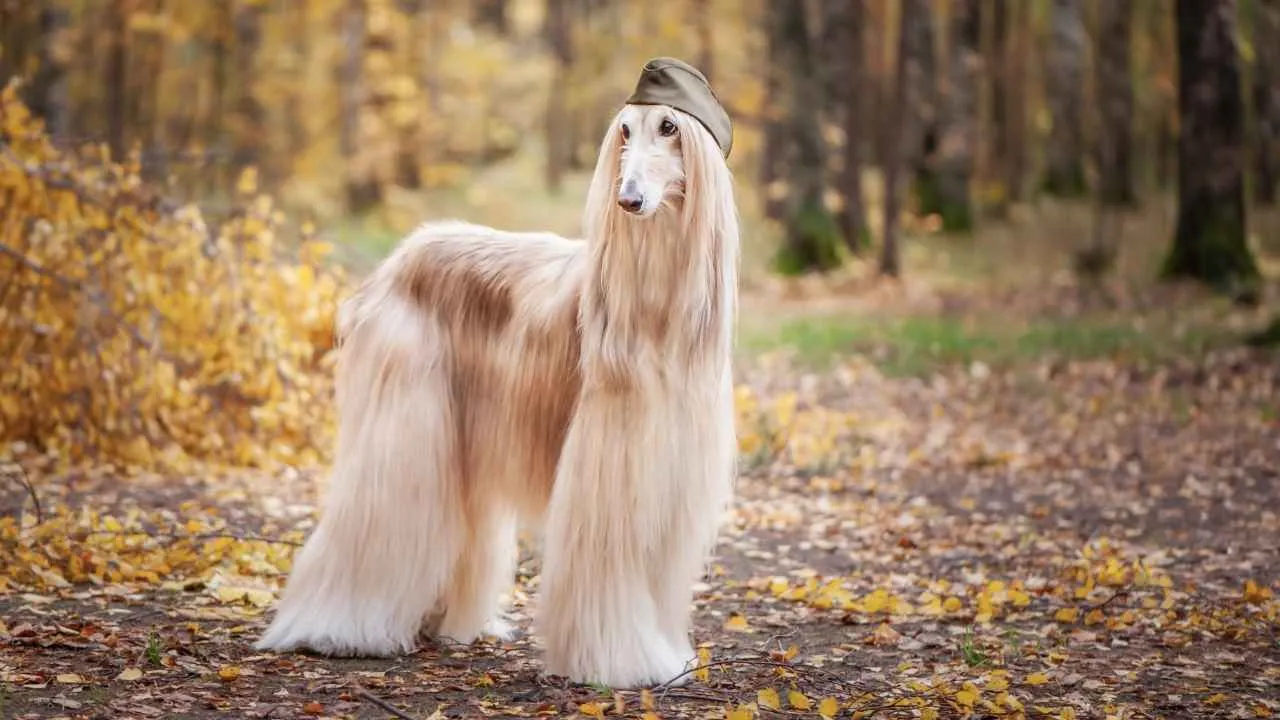
Afghan Hounds are the epitome of elegance, with their long, flowing coats that seem to shimmer in the sun. While their beauty is undeniable, the grooming routine required for this breed is no small feat. Their fine, silky coat grows long and can easily become tangled or matted without frequent attention.
Afghan Hounds need to be brushed daily to prevent their hair from matting, especially in areas where tangles form more easily, like behind the ears and under the legs. The long, silky coat isn’t just for show—it’s a product of their ancient, desert origins, where it was designed to protect them from harsh weather. However, as a pet, this coat requires constant care to keep it in tip-top shape.
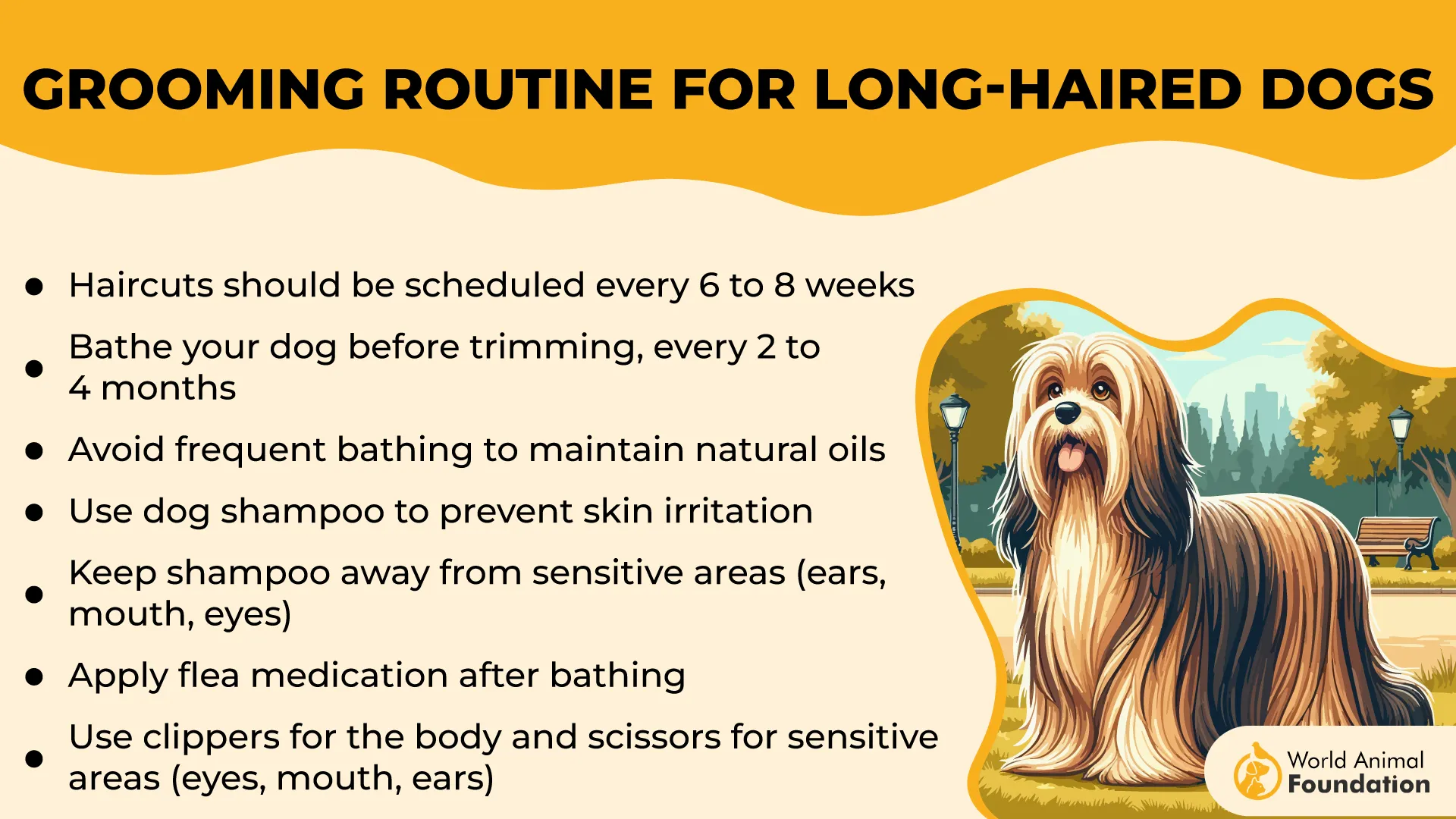
Along with daily brushing, Afghan Hounds should have regular baths to keep their coats shiny and clean, but they shouldn’t be bathed too often to avoid drying out their skin. Their long ears, another key feature, also require attention, as they can trap moisture and debris, potentially leading to infections if not cleaned properly.
Despite all the grooming work, Afghan Hounds have a calm and independent nature, making them a relatively low-energy companion once the grooming is taken care of. Their aloof and dignified demeanor, combined with their majestic appearance, makes them a unique and stunning breed—but definitely not one for those who prefer low-maintenance pets!
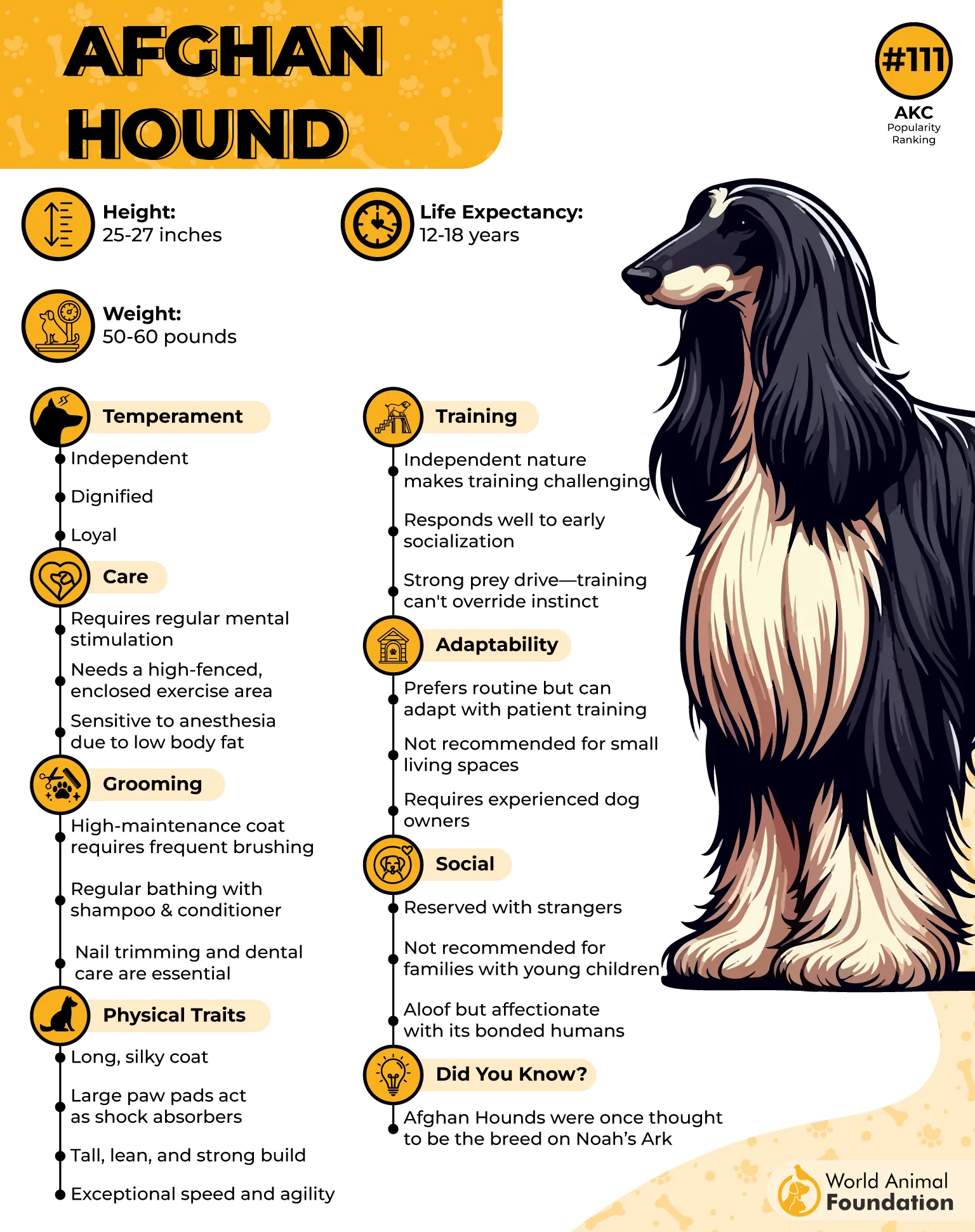
In addition to their daily dog grooming needs, Afghan Hounds require professional grooming every few months to maintain their coat’s length and health, as noted by AKC.
2. Old English Sheepdog
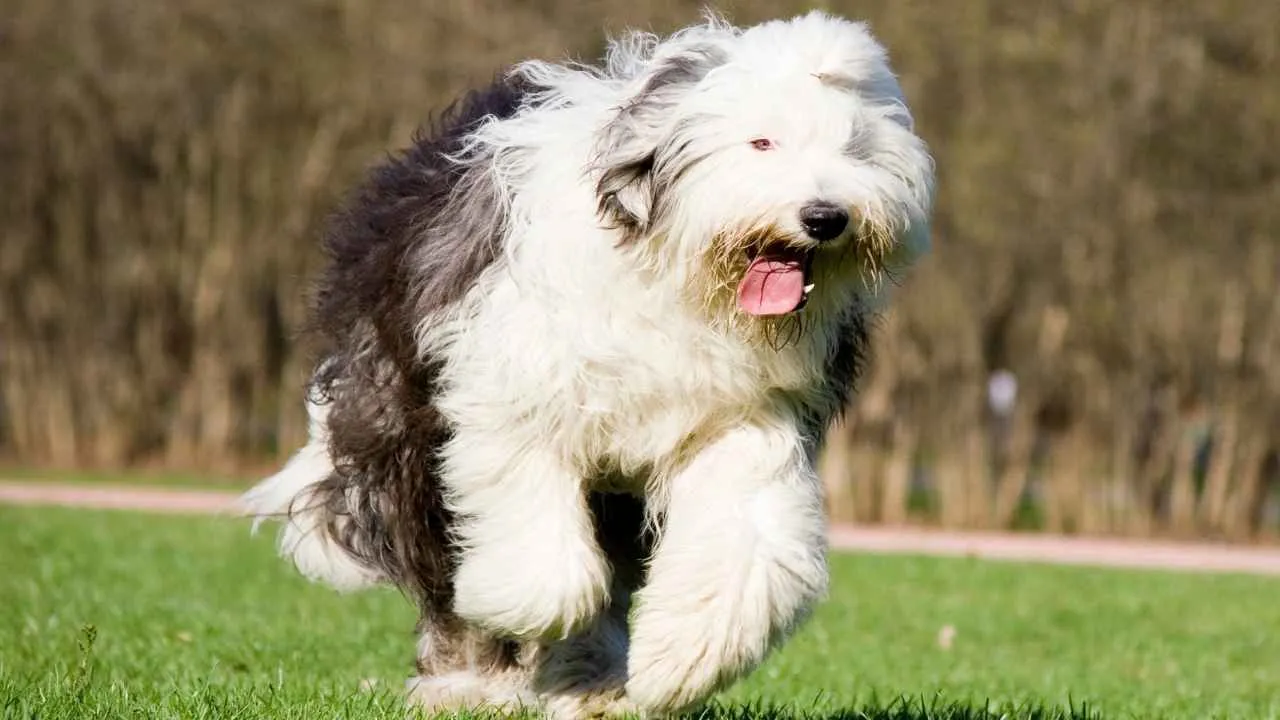
Old English Sheepdogs are famous for their thick, dense double coats and their playful, affectionate personalities. However, the amount of grooming required to keep their coat in top shape is no joke. These dogs were originally bred for herding sheep, and their coats helped protect them from the elements as they worked long hours outdoors. Today, their dense fur is a symbol of their hardworking history, but it also requires regular maintenance to prevent painful tangles and mats.
Their coats are beautiful but high-maintenance—frequent brushing is essential, ideally every day, to keep their fur from becoming matted. If left unattended, their coats can quickly develop painful mats, particularly around the ears, legs, and underbelly. The Old English Sheepdog’s coat is thick and plush, which makes it prone to trapping dirt and moisture. This means they also need regular baths to keep their coat clean and manageable.
As also highlighted by AKC, the grooming sessions for an Old English Sheepdog go beyond just brushing. Their nails should be trimmed regularly, and their ears need to be cleaned to prevent infections, as their floppy ears can trap dirt and moisture. Because their dense coat sheds heavily, it’s important to manage their shedding by brushing them often. Many owners find that professional grooming every 6–8 weeks is necessary to keep their dog’s coat in top condition.
Personality-wise, the Old English Sheepdog is known for being friendly, playful, and affectionate. They are great family pets and are especially good with children. Their playful nature is part of what makes them so lovable, but it’s important to remember that these dogs also require ample exercise to stay happy and healthy. Without regular physical activity, they can become restless and potentially develop behavior issues.
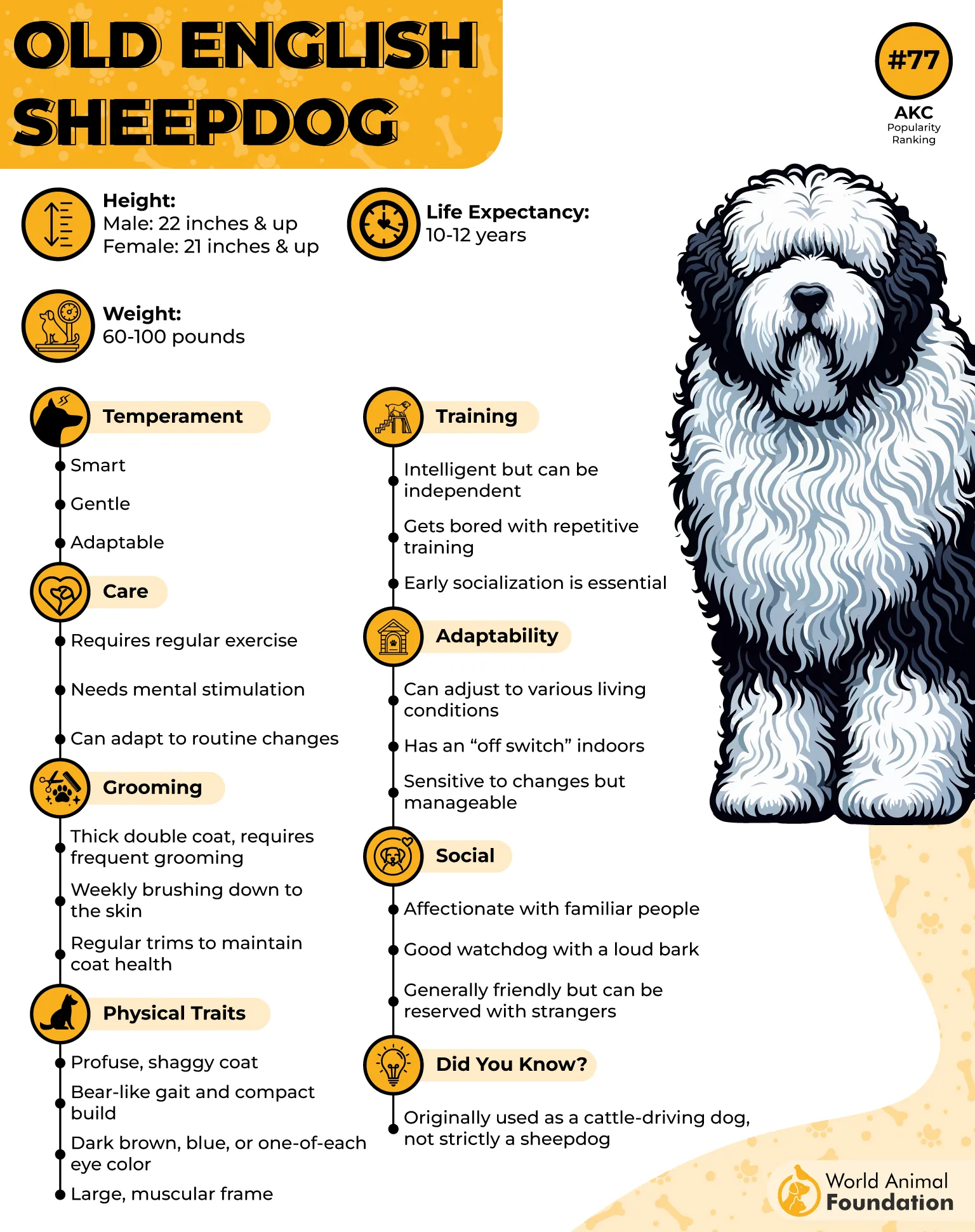
In terms of appearance, Old English Sheepdogs have a unique look with their thick, shaggy coat that covers their eyes. Their coat is typically a mix of gray and white, and they have a large, square-shaped body. Their dark eyes, which are often hidden beneath their fur, add to their charming, “fluffy” appearance. Overall, the Old English Sheepdog’s grooming needs may be intensive, but their affectionate nature and playful spirit make the effort worth it.
3. Portuguese Water Dog
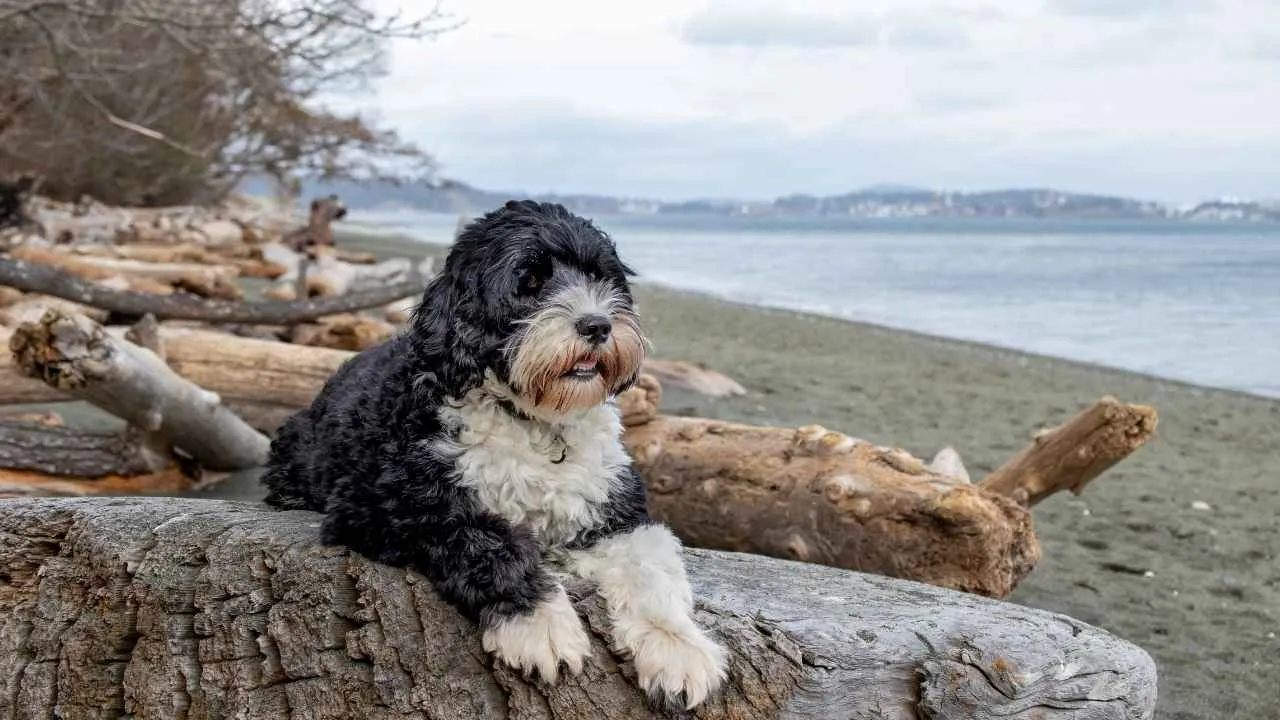
If you’re looking for an active and grooming-intensive dog, the Portuguese Water Dog could be a perfect fit. This breed was originally bred to work on fishing boats, assisting fishermen by herding fish and pulling in nets. As a result, their coat is designed to protect them from the water, and it’s made up of curly hair that needs regular grooming to prevent matting.
Portuguese Water Dogs are highly intelligent and energetic, making them an ideal choice for active pet owners who can dedicate time to their grooming. Their curly coats require frequent brushing, at least 3–4 times a week, to keep them from becoming tangled. If you’re not up for the daily brushing routine, this breed may not be the best option. Their coats also require trimming every 6–8 weeks to maintain their appearance and prevent mats from forming.
According to AKC, despite their need for extensive grooming, Portuguese Water Dogs are incredibly loyal and energetic. They thrive in households with an active lifestyle and enjoy swimming, hiking, and running. Their high energy levels mean they need plenty of exercise to stay happy. If they don’t get enough physical activity, they may become destructive or anxious.
The Portuguese Water Dog’s coat can come in black, white, or brown, and it’s typically curly or wavy. Their eyes are dark brown and complement their coat, adding to their striking appearance. Their coat is water-resistant, which makes them excellent swimmers—one of the reasons they were bred to work on fishing boats. As a pet owner, it’s important to recognize that regular grooming will help maintain both their coat and overall health.
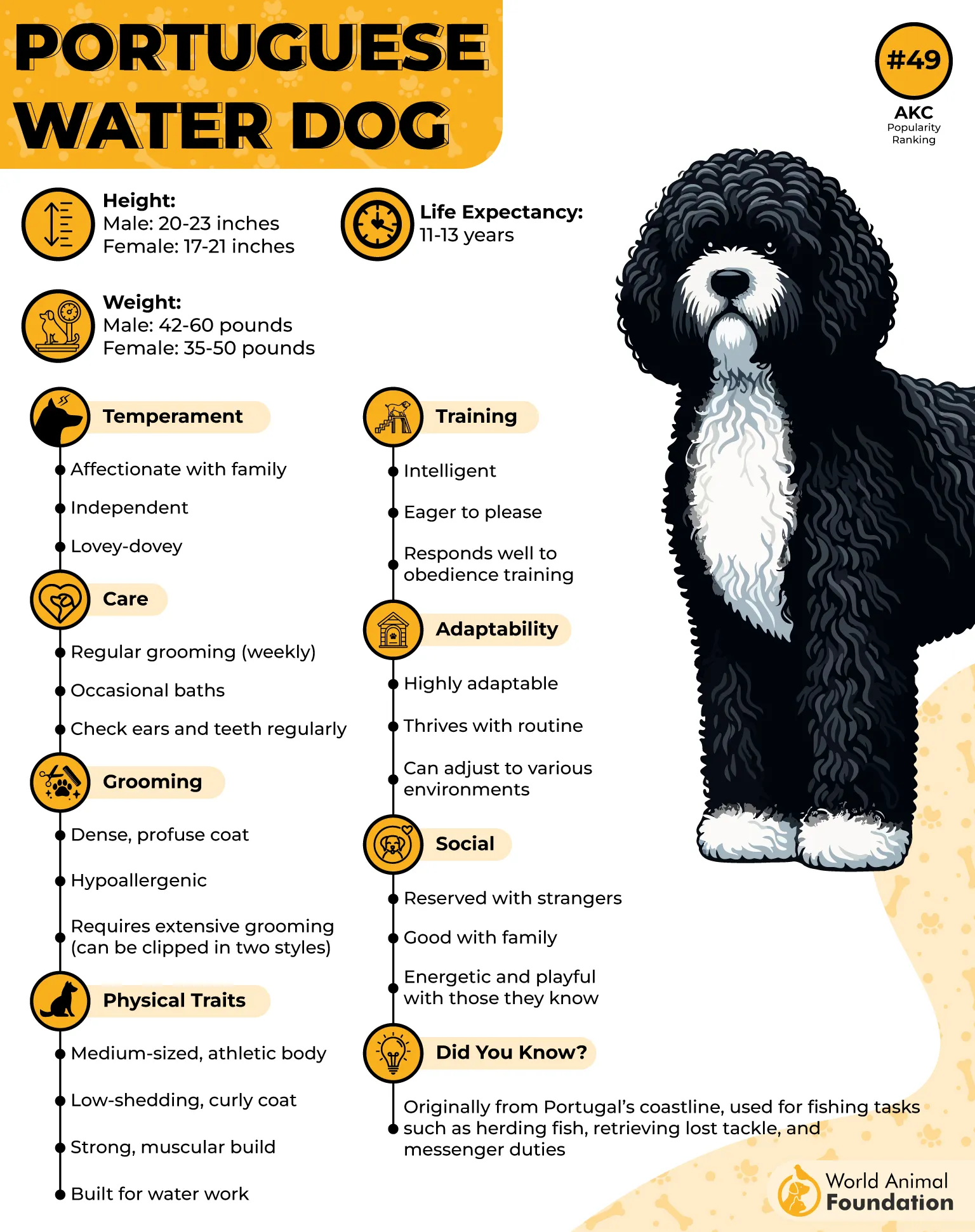
This breed is known for being friendly, intelligent, and eager to please. They make great family pets and are excellent with children. However, their energetic nature means they’ll need a lot of attention and stimulation to stay content. Portuguese Water Dogs are perfect for active pet owners who can commit to their grooming needs and daily exercise routines.
4. Chow Chow
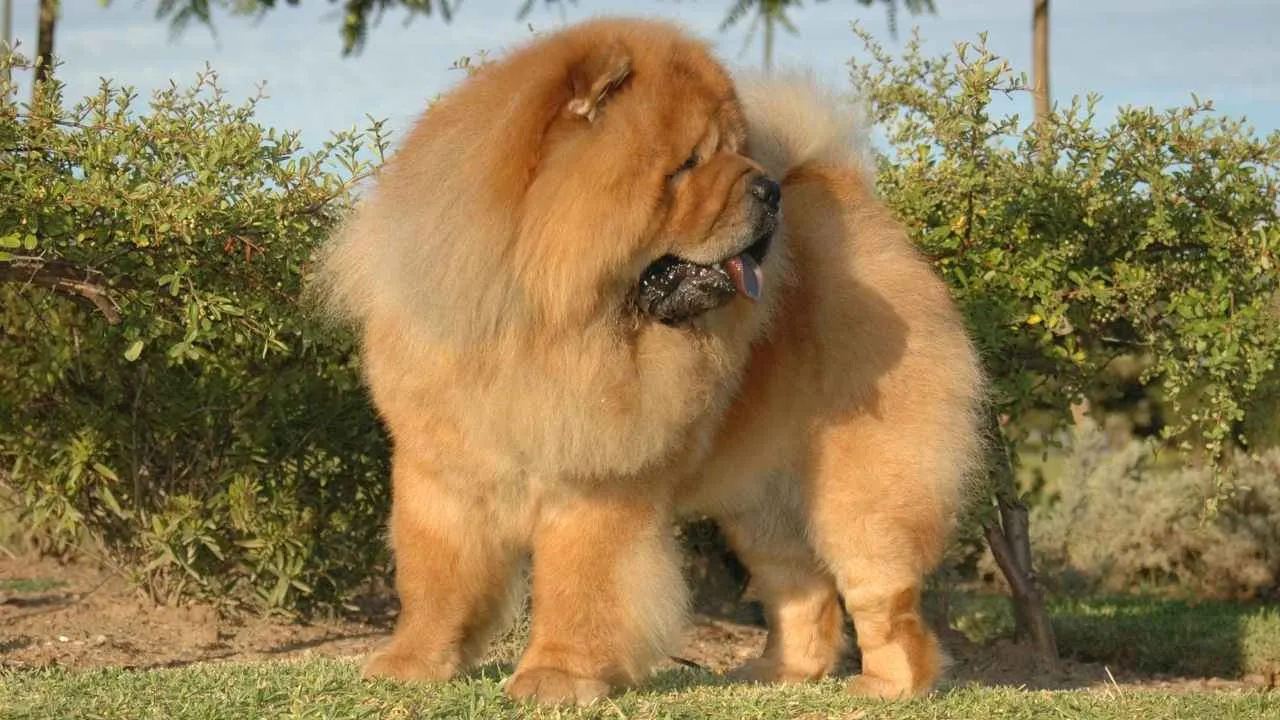
Chow Chows are easily recognized by their distinct lion-like mane and fluffy coat, which is one of their most striking features. However, this thick double coat requires a high level of grooming commitment to stay in pristine condition. Chow Chows have a dense undercoat that sheds seasonally, but they also shed throughout the year, requiring consistent care to prevent mats and tangles from forming. Without regular brushing, their coat can become matted, making it uncomfortable for the dog and potentially causing skin issues.
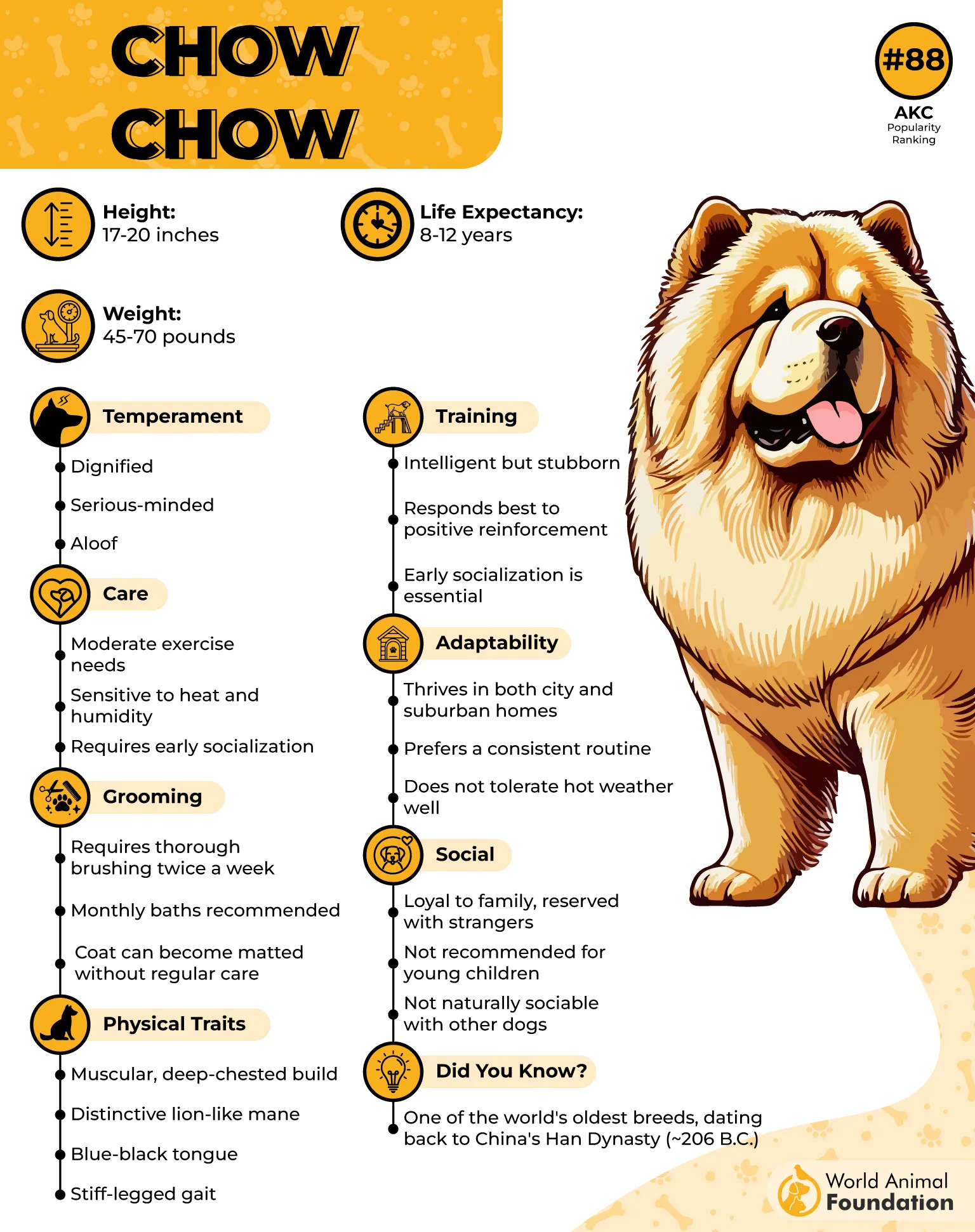
The grooming process for Chow Chows involves brushing their thick fur at least three times a week, but during shedding seasons, more frequent brushing may be necessary to remove the excess fur. It’s essential to address tangles as soon as they form to prevent painful matting, especially around the neck, chest, and hindquarters, where their coat tends to get the thickest.
Bathing should be done regularly, but it’s important not to overdo it, as frequent baths can strip away the natural oils in their fur. Chow Chows also have sensitive skin, so it’s important to use a gentle, moisturizing shampoo to keep their coat and skin healthy. Their nails must be trimmed regularly, as their thick coat often hides any signs of nail growth, and their ears should be cleaned routinely to prevent infections due to their dense fur around the ears.
With their calm and reserved temperament, Chow Chows are often independent dogs, but their grooming needs are not to be overlooked. This breed requires both patience and consistency to maintain their beautiful coat, making them a breed that is better suited for owners who enjoy grooming and have the time to keep up with their regular routines.
Chow Chows are a unique and regal breed, and their grooming needs reflect their dignified nature. Owners should also be mindful of their diet and overall health, as maintaining a healthy weight can contribute to a shinier, healthier coat.
5. Poodle
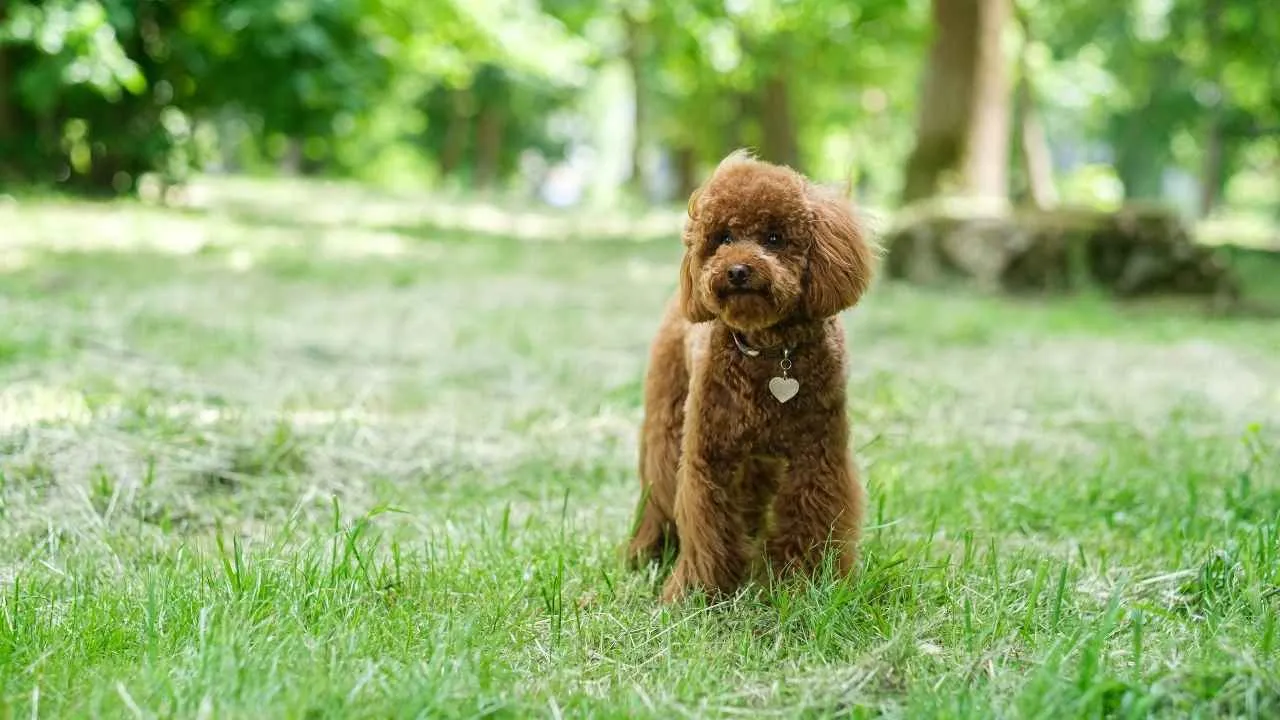
Poodles are often praised for their elegant appearance and hypoallergenic coat, which is curly and dense. While they shed very little, their hair grows continuously, which means that without regular grooming, it can quickly become tangled, matted, and unruly.
Poodles require daily brushing to remove tangles and prevent mats from forming. The curly nature of their fur means that loose hair stays trapped within the coat, making brushing even more critical to keep things manageable.
Along with brushing, Poodles need to be professionally groomed every 6–8 weeks. Many owners choose to have their Poodles trimmed into a distinctive “Poodle cut,” where their coat is shaped and trimmed in a specific style. Regular grooming helps maintain the shape and health of their coat, ensuring that the dog looks as neat and elegant as it was meant to be.
Poodles are prone to ear infections due to their floppy ears, so it’s essential to clean their ears regularly to avoid excess wax buildup and moisture. Additionally, their nails should be trimmed regularly, and they may need occasional teeth cleaning to maintain their overall health. While their grooming routine may seem like a lot of work, Poodles are known for being intelligent, easy to train, and highly sociable, which makes them well worth the effort.
Their grooming routine is both time-consuming and costly if done by professionals, but it’s an important aspect of keeping them healthy and looking their best. With the right tools and consistent grooming habits, Poodles remain one of the most beloved dog breeds for those willing to give them the care they deserve.
6. Cocker Spaniel
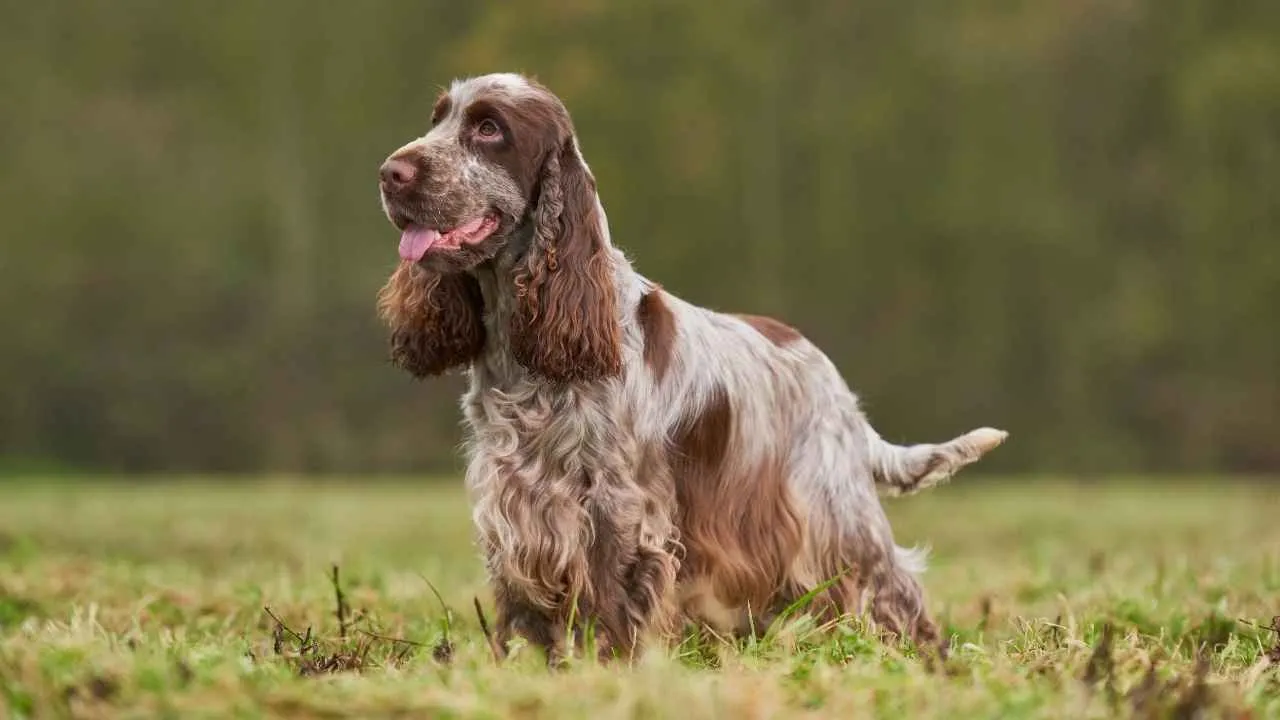
Cocker Spaniels are known for their sweet and affectionate nature, but their beautiful, silky coats come with a hefty grooming requirement. Their coats grow long and require frequent brushing to keep them free from tangles and mats. These dogs are prone to matting, especially around their ears, legs, and belly, so daily brushing is highly recommended to prevent uncomfortable tangles from forming.
Their long ears, one of the breed’s most defining features, also require extra attention. Since their ears are often floppy and close to the ground, they can easily pick up dirt, moisture, and debris, leading to ear infections if not cleaned regularly.
Cocker Spaniels also have a tendency to develop tear stains around their eyes, so it’s important to wipe them regularly to keep their face clean and prevent staining. Bathing is another grooming aspect that should be done carefully.
Cocker Spaniels shouldn’t be bathed too frequently, as this can dry out their skin and coat. Instead, aim for a bath every 4–6 weeks, and be sure to use a gentle dog shampoo. Their nails also need regular trimming to prevent overgrowth, and some owners opt for professional grooming to help maintain the look of their coat.
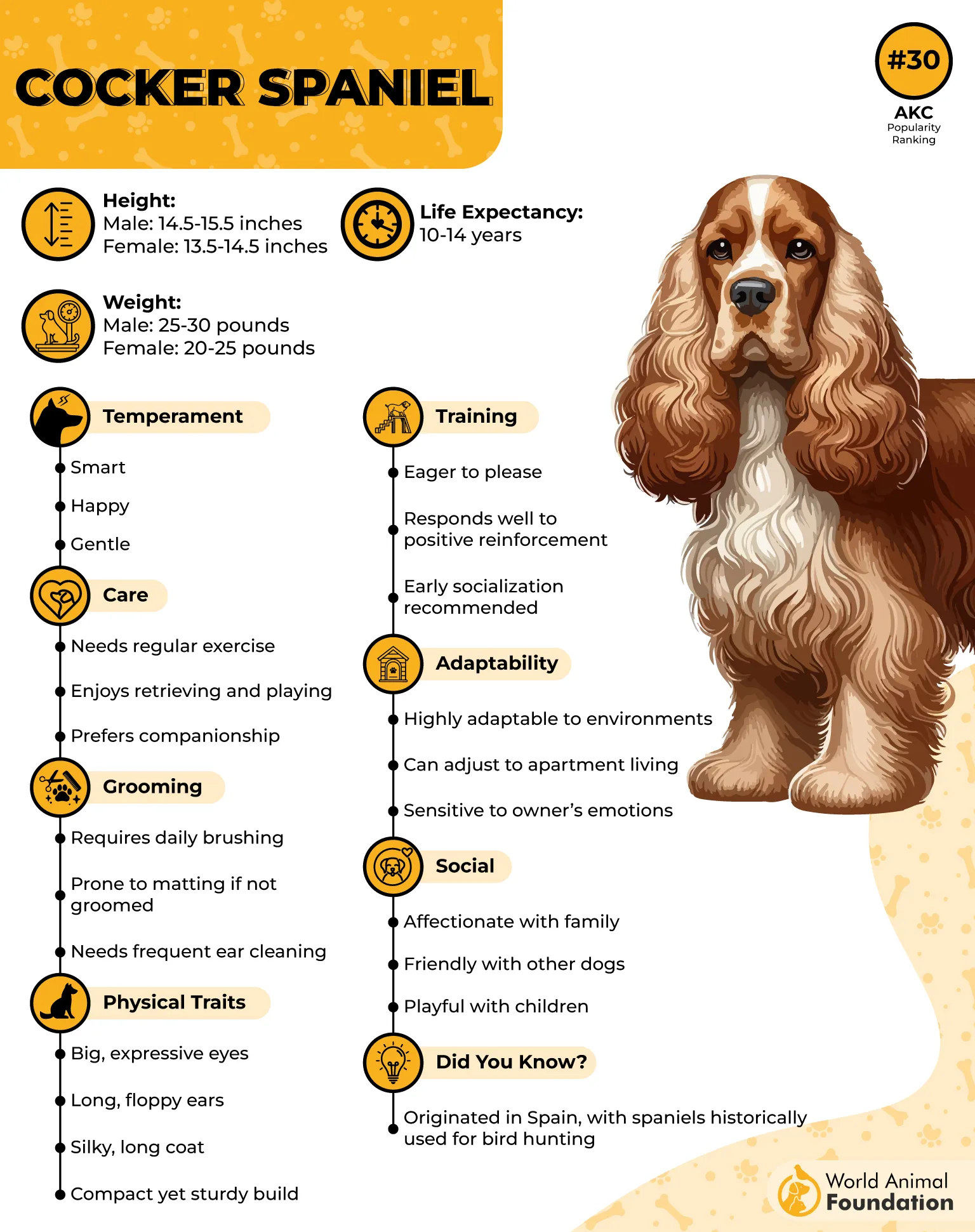
With their high grooming demands, Cocker Spaniels can be a handful for first-time dog owners. However, with the right attention to grooming, they reward their owners with affectionate companionship and are one of the most loving dog breeds, particularly suited for families.
7. Shih Tzu
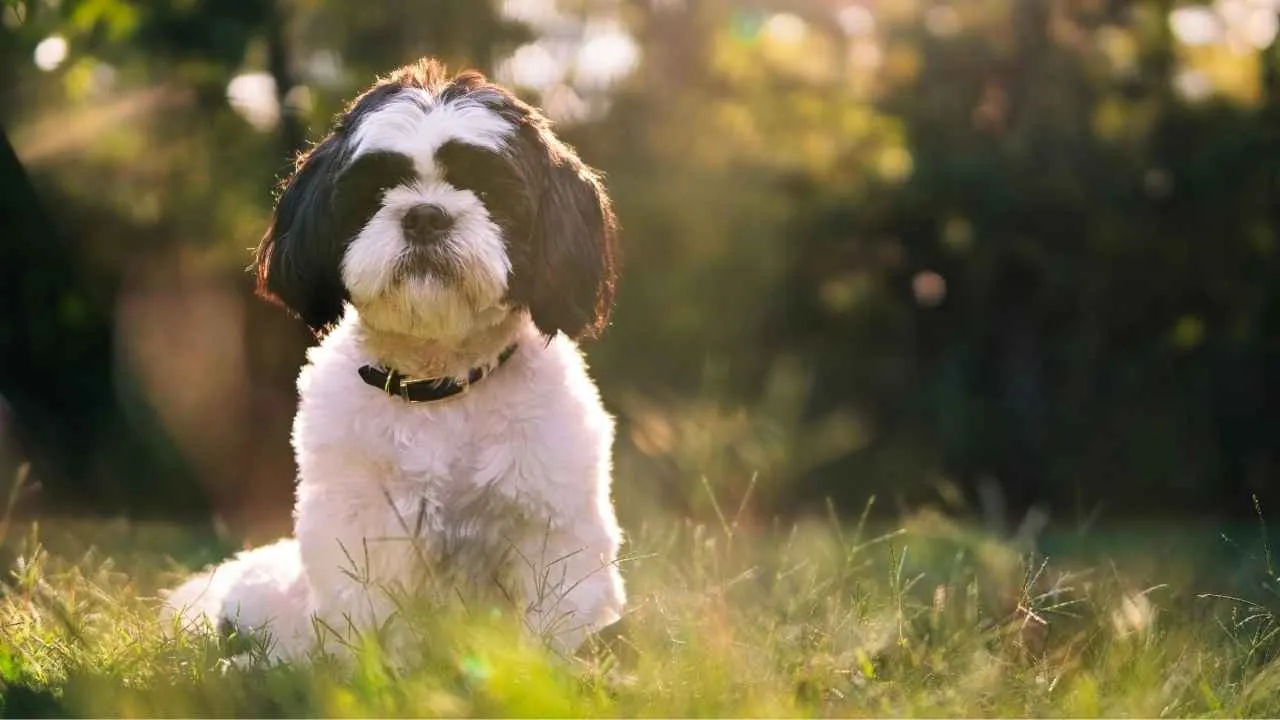
Shih Tzus are small, affectionate dog breeds that are loved for their adorable appearance and sweet personalities. Their long, flowing coat, however, requires a significant amount of attention to keep it in top condition. Without regular grooming, their coat can easily become tangled and matted, so daily brushing is essential to prevent this. Since they have a double coat, loose fur gets trapped within their coat, which can lead to mats if not removed regularly.
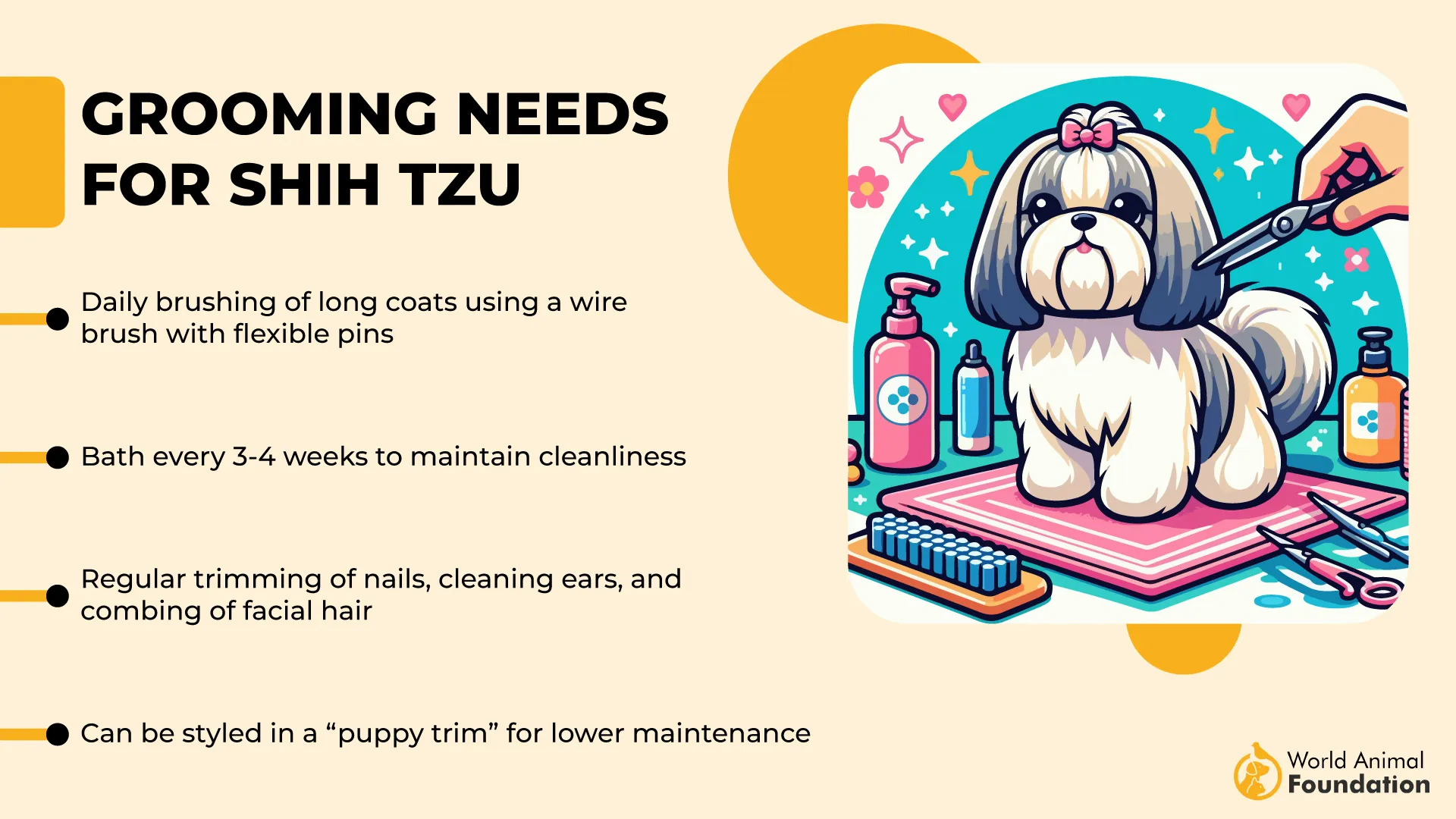
The Shih Tzu’s face can also be prone to tear staining, which requires regular cleaning to prevent build-up and maintain a clean look. Their long ears need to be carefully cleaned as well to prevent infections due to trapped moisture and debris.
For owners who prefer not to deal with the upkeep of a long coat, the Shih Tzu can be groomed into a short “puppy cut,” which is much easier to maintain while still showcasing their charming features. Bathing should be done regularly, about every 4–6 weeks, to ensure that their coat stays clean and shiny.
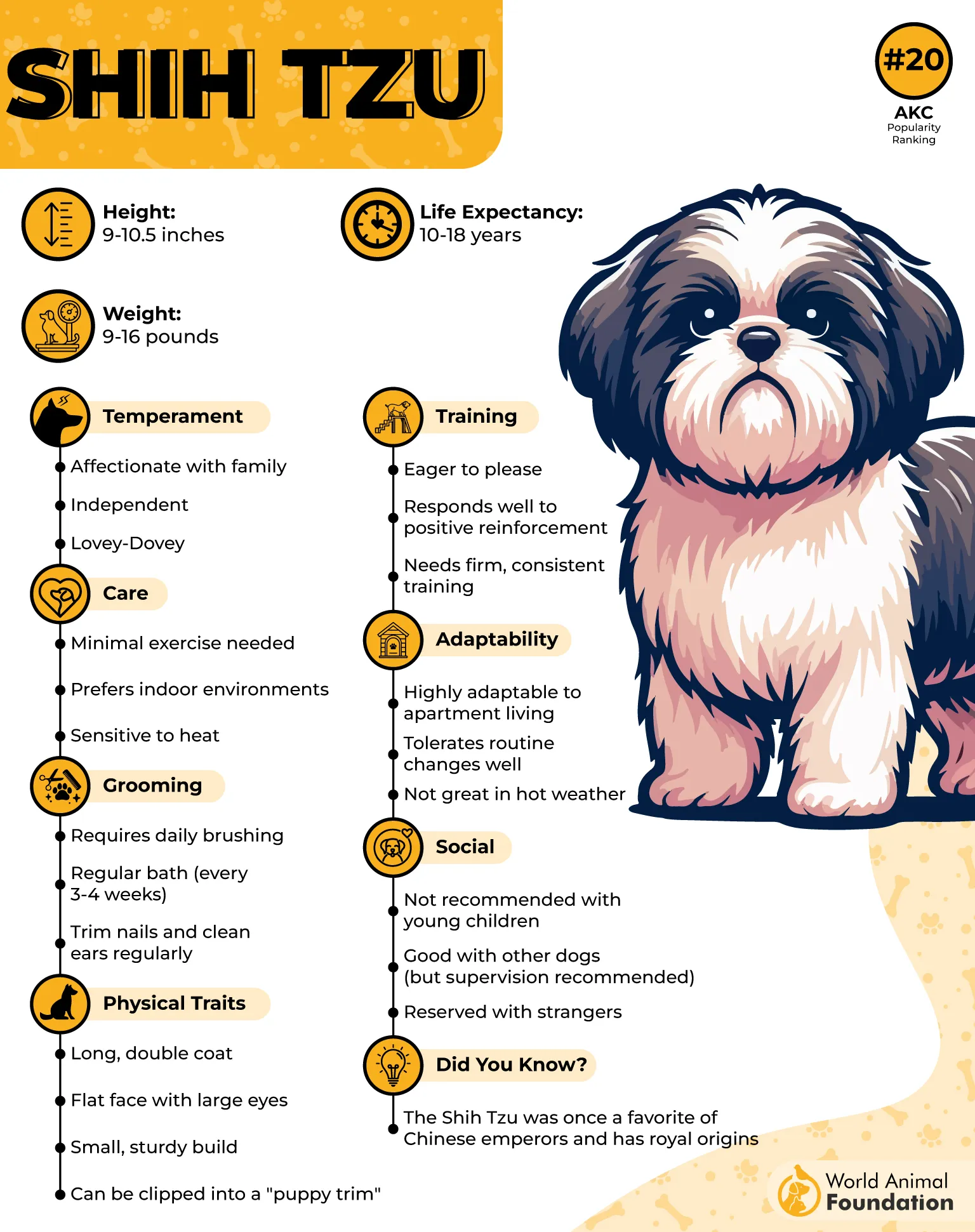
But it’s important not to bathe them too frequently, as this can cause their skin to become dry and irritated. Along with regular grooming, Shih Tzus require regular nail trimming and eye cleaning to maintain their overall hygiene.
While Shih Tzus are known for their laid-back and affectionate nature, their grooming routine can be demanding, especially for first-time dog owners. However, with proper grooming, they remain one of the most affectionate and hypoallergenic dog breeds, making them a great choice for families or individuals looking for a loyal companion.
Conclusion
Grooming-intensive dog breeds require a commitment to daily care and attention, but the rewards are well worth the effort. From the elegant Poodle to the adorable Shih Tzu, these high-maintenance dog breeds are known for their stunning coats, but their long hair requires consistent grooming. Weekly brushing, regular haircuts, and professional grooming are essential to keep their coats healthy and tangle-free, which also contributes to their overall dog’s health.
Many pet owners find that using a slicker brush helps manage shedding and maintain their dog’s beautiful fur. Whether you’re adopting a Poodle, Cocker Spaniel, or Shih Tzu, be prepared for the time and effort involved. Beyond grooming, these dogs offer affectionate companionship that makes every session a bonding experience. Let us know in the comments below if you have a high-maintenance dog!


